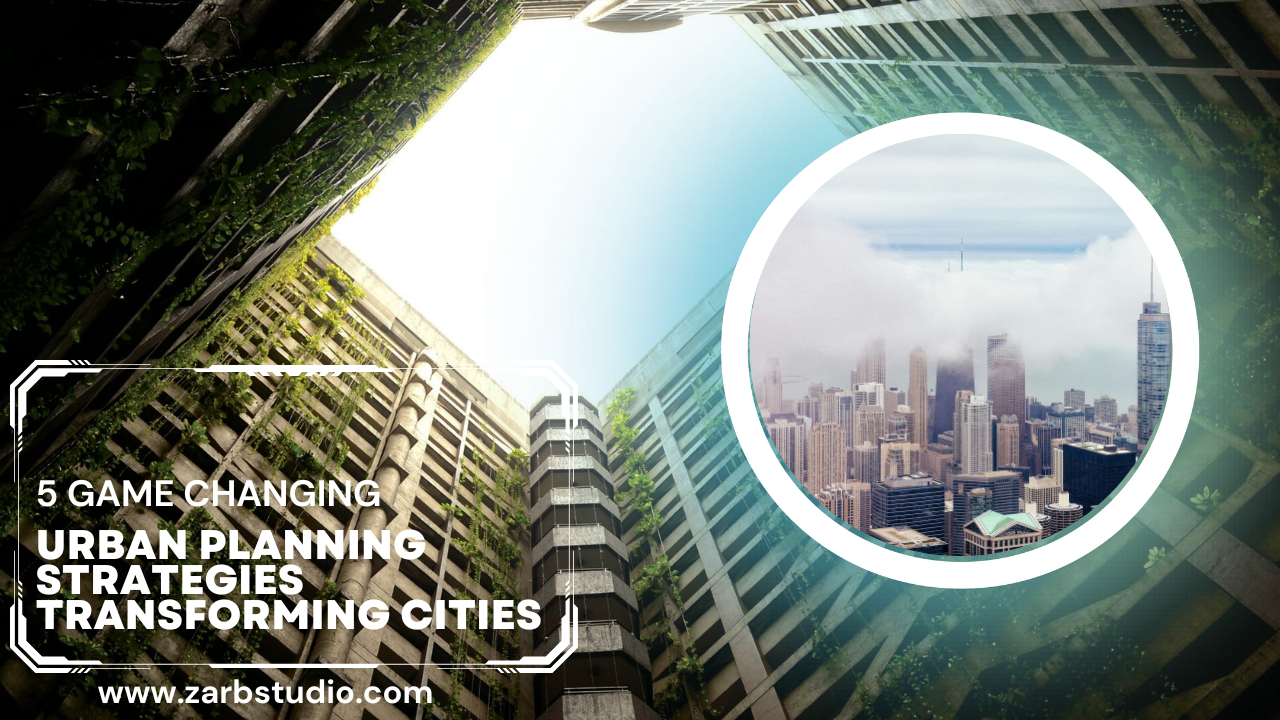GRIHA Certification: The Ultimate Guide to Sustainable Green Buildings
Introduction
Sustainable building techniques have grown more important than ever as the globe deals with environmental damage and climate change. Leading national rating system for assessing building environmental performance in India is GRIHA Certification, sometimes known as Green Rating for Integrated Habitat Assessment. It seeks to advertise environmentally friendly, resource-wise conscientious, energy-efficient buildings.
This post will go over what GRIHA Certification is, why it’s important, the difficulties in sustainable building, and how GRIHA offers workable answers to handle these urgent issues.
Why GRIHA Certification Matters
In a time when sustainability goes beyond mere buzzword, GRIHA Certification (Green Rating for Integrated Habitat Assessment) is a lighthouse for ecologically conscious building. Using a lot of global resources and energy, buildings cause pollution, carbon emissions, and environmental damage. The need of sustainable living environments has never been more important given the fast urbanization and rising population.
A GRIHA certification provides a disciplined framework to guarantee that constructions satisfy high sustainability criteria. Whether your profession is development, architecture, or housekeeping, knowing and implementing GRIHA will assist lower your carbon footprint, increase energy efficiency, and create better living quarters. But why ought you to give GRIHA Certification some thought? Let us now explore its advantages, procedure, and influence more thoroughly.
The Environmental Crisis in the Building Sector
Major causes of world pollution, energy consumption, and resource depletion are the building sector. The demand for infrastructure has soared with fast urbanization, which raises many environmental issues:
- High Energy Consumption – Buildings account for around 40% of world energy use, hence raising carbon emissions.
- Resource Depletion – Natural resources are strained by too heavy usage of basic materials such sand, cement, and water.
- Waste Generation – Landfill overload is much exacerbated by building and demolition garbage.
- Poor Indoor Air Quality – Conventional buildings can lack appropriate ventilation, which causes health problems from bad indoor air quality.
- Water Scarcity – The building sector consumes a lot of water, therefore aggravating water scarcity.
These difficulties demand a quick response to adopt environmentally friendly building methods, making GRIHA Certification an essential standard for guiding sustainable construction practices.
The Consequences of Unsustainable Construction
Should these issues go unbridled, they will seriously affect human well-being and the environment:
- Increased Carbon Footprint – More energy use results in faster climate change by increased greenhouse gas emissions.
- Health Hazards – Bad building air quality could cause allergies, tiredness, and respiratory problems.
- Depleting Natural Resources –Scarness will result from overconsumption of non-renewable resources including fresh water.
- Rising Costs –Effective buildings raise long-term costs by driving more energy and water bills.
- Loss of Biodiversity – Habitat loss results from increasing urbanization and deforestation done to satisfy building needs.
Cities will suffer great environmental and financial difficulties without a methodical approach to sustainable building.
GRIHA Certification – A Sustainable Way Forward
Designed by TERI (The Energy and Resources Institute), GRIHA certification (Green Rating for Integrated Habitat Assessment) is an indigenous building rating system approved by the Ministry of New and Renewable Energy (MNRE), Government of India. From design and construction to operation and maintenance, it assesses a building’s environmental impact all through its lifetime.
Key Objectives of GRIHA Certification:
- Reduce resource consumption (energy, water, materials)
- Improve energy efficiency in buildings
- Enhance occupant health and well-being
- Promote sustainable construction materials and practices
- Encourage renewable energy use
The Process of Getting GRIHA Certified
Use these main guidelines to make your construction GRIHA-compliant:
Step 1: Registration
- Projects must be registered on the official GRIHA website.
- A dedicated project team is formed to oversee compliance.
Step 2: Preliminary Assessment
- The building design and plans are evaluated based on sustainability benchmarks.
- Energy modeling and environmental impact studies are conducted.
Step 3: Documentation and Compliance
- Submit technical data, materials used, and compliance reports.
- Incorporate green building techniques like solar panels, water-efficient plumbing, and waste segregation.
Step 4: On-Site Audit
- GRIHA experts inspect the building to verify compliance with guidelines.
- Any required modifications or upgrades are suggested.
Step 5: Final Certification
- Upon successful evaluation, the building is awarded a GRIHA rating (1 to 5 stars).
- Continuous monitoring ensures long-term adherence to green principles.
GRIHA Rating System and Categories
GRIHA awards scores based on buildings’ performance across several criteria:
1. Site Selection and Planning (20%)
- Sustainable land-use planning
- Protection of natural vegetation
- Reduction in soil erosion
2. Energy Efficiency (25%)
- Use of renewable energy (solar, wind, etc.)
- Passive design strategies for natural lighting and ventilation
- Energy-efficient HVAC (heating, ventilation, and air conditioning) systems
3. Water Management (15%)
- Rainwater harvesting systems
- Low-flow fixtures to reduce water consumption
- Wastewater recycling and reuse
4. Waste Management (15%)
- Segregation and recycling of construction waste
- Use of eco-friendly materials like fly ash bricks
- Composting organic waste
5. Indoor Environmental Quality (10%)
- Natural ventilation and fresh air intake
- Low-VOC (volatile organic compounds) paints and finishes
- Thermal comfort for occupants
6. Sustainable Materials (15%)
- Use of locally sourced materials
- Recycled and biodegradable building components
- Low-carbon construction techniques
A building earns points depending on degree of compliance and must satisfy minimal standards to be eligible for GRIHA certification.
Benefits of GRIHA Certification
Obtaining GRIHA Certification offers several advantages for developers, occupants, and the environment:
1. Environmental Benefits:
- Lower Carbon Footprint – Energy-efficient buildings reduce greenhouse gas emissions.
- Water Conservation – Sustainable practices minimize water wastage.
- Biodiversity Protection – Green construction methods help preserve ecosystems.
- Reduced Waste Generation – Proper disposal and recycling lower landfill burden.
2. Economic Benefits:
- Lower Energy and Water Bills – Energy-efficient systems cut down costs in the long run.
- Higher Property Value – Green-certified buildings attract higher resale and rental value.
- Government Incentives – Tax benefits, subsidies, and grants for GRIHA-compliant projects.
- Reduced Maintenance Costs – Sustainable buildings require less upkeep.
3. Social and Health Benefits:
- Improved Indoor Air Quality – Enhances occupant health and productivity.
- Comfortable Living Spaces – Better lighting, ventilation, and temperature control.
- Enhanced Aesthetic Appeal – Green spaces and sustainable architecture create a positive environment.
- Community Well-being – GRIHA promotes responsible urban planning.
Challenges and Future of GRIHA Certification
The Challenges of Unsustainable Buildings
For decades, fast building and urbanization have degraded the surroundings. Cities are growing; energy consumption is skyrocketing; and natural resources are fast running out. Conventional structures cause huge carbon emissions, require too much energy, and help to drive world warming.
Some main difficulties for sustainable structures consist in:
- High energy consumption – Traditional buildings account for nearly 40% of global energy use.
- Excessive water wastage – Large-scale water consumption with minimal recycling efforts.
- Increased carbon footprint – High dependency on fossil fuels leading to environmental degradation.
- Poor indoor air quality – Lack of proper ventilation and use of toxic materials affect occupant health.
- Waste mismanagement – Construction and demolition waste contribute significantly to landfills.
Obviously, a change toward sustainability is desperately needed. How therefore can we close the distance between present building methods and a better future?
The Transformation Through GRIHA Certification
Imagine now a society in which buildings are made to use less energy, save water, cut waste, and improve indoor air quality—all while keeping great utility and architectural beauty. GRIHA (Green Rating for Integrated Habitat Assessment) Certification seeks just this.
With buildings approved by GRIHA:
- Renewable energy sources and clever design help to cut energy use by 30–50%.
- Rainwater collecting and wastewater recycling among other water-saving techniques help to reduce consumption
- Low embodied energy materials help to reduce the total carbon footprint of a structure.
- Improved indoor air quality and less reliance on synthetic lighting by optimised ventilation and daylighting
- Good waste management plans guarantee appropriate reduction of landfill trash and appropriate recycling.
Buildings that have GRIHA certification move from being environmental liabilities to self-sustaining, energy-efficient constructions that advance a better and cleaner planet.
How Does GRIHA Compare to Other Green Building Certifications?
GRIHA Certifications vs. Other Green Certifications
GRIHA is particularly suited for Indian climatic conditions and government policies, making it a preferred choice for sustainable construction in India.
| Criteria | GRIHA | LEED (USA-based) | IGBC (India-based) |
| Origin | India | USA | India |
| Focus | Energy, water, waste, and materials | Energy efficiency and carbon emissions | Eco-friendly construction practices |
| Rating System | 1-5 stars | Certified to Platinum | Certified to Platinum |
| Government Affiliation | Endorsed by the Government of India | Private certification | Private certification |
| Applicability | Residential & commercial | Commercial & industrial | Residential, commercial & industrial |
GRIHA vs. LEED (Leadership in Energy and Environmental Design)
LEED, created by US developers One of the most internationally known certifications is the Green Building Council (USGBC.). Although both systems support sustainability, their approaches and regional focus vary.
GRIHA Strengths:
- Tailored for Indian climate and construction rules
- Encourages local material use and passive cooling techniques
- Mandates on on-site renewable energy integration GRIHA strengths
LEED Strengths:
- Certified, Silver, Gold, and Platinum;
- Strong emphasis on indoor environmental quality and innovation.
- Recognized internationally across many countries
Verdict: GRIHA gives better compatibility with local criteria if you are building a project in India; LEED offers international recognition and standardizing.
GRIHA Certification vs. IGBC (Indian Green Building Council Certification)
Designed on LEED ideas but tailored for the Indian environment, IGBC is another green certification system extensively applied in India.
GRIHA Strengths:
- Endorsed by the Government of India, leading to policy-driven incentives
- Comprehensive review spanning environmental, social, and economic issues
- Addresses affordable housing and energy conservation GRIHA Strengths
IGBC Strengths:
- Popular in business and corporate projects
- Fast-track certification procedure for real estate developers
- Compatible with LEED and international criteria
Verdict: While IGBC is more prevalent in the commercial sector, GRIHA’s government backing makes it ideal for public and large-scale residential projects.
GRIHA Certification vs. BREEAM (Building Research Establishment Environmental Assessment Methodology)
Based in the UK, BREEAM certifies building sustainability in several areas including management, health, energy, and pollution.
GRIHA Strengths:
- Encourages cost by customizing to Indian economic restrictions
- Prioritizes water efficiency, which is vital in water-scarce areas
- Focusses on indigenous building techniques
BREEAM Strengths:
- Established since 1990, BREEAM is among the first grading systems
- Offers thorough lifetime assessments for building materials
- Widely used throughout European countries
Verdict:
BREEAM is best suited for projects in Europe; GRIHA is more appropriate for Indian projects because of its cost and emphasis on local sustainability issues.
Designed to further sustainability, energy efficiency, and environmental responsibility in the built environment, India’s national green building grading system, Green grading for Integrated Habitat Assessment (GRIHA), Projects are ranked according to water and energy efficiency, waste management, materials chosen, and carbon footprint lowering. Five Indian and five international projects in line with GRIHA standards and sustainable building techniques are investigated in this paper.
Indian Case Studies
1. Infosys Pune, Maharashtra
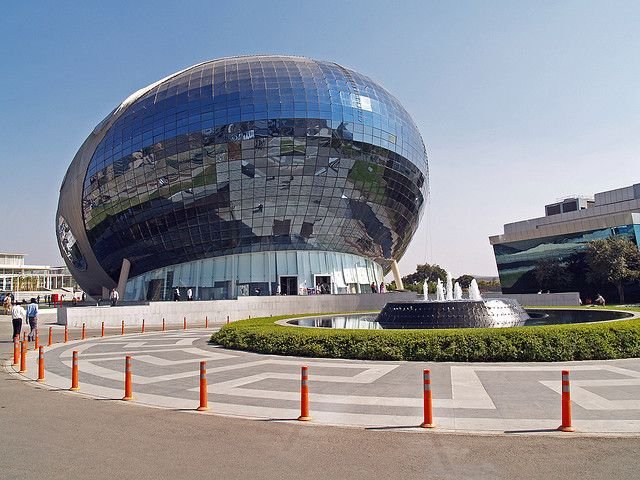
Comprising passive cooling, water conservation strategies, and renewable energy sources, Infosys Pune campus is GRIHA certified 5-star facility. The structure boasts solar panels, rainwater collecting, and effective HVAC systems cutting energy use by half. The carbon footprint of the project has been considerably reduced by using environmentally friendly materials including fly ash bricks.
2. IIT Gandhinagar, Gujarat
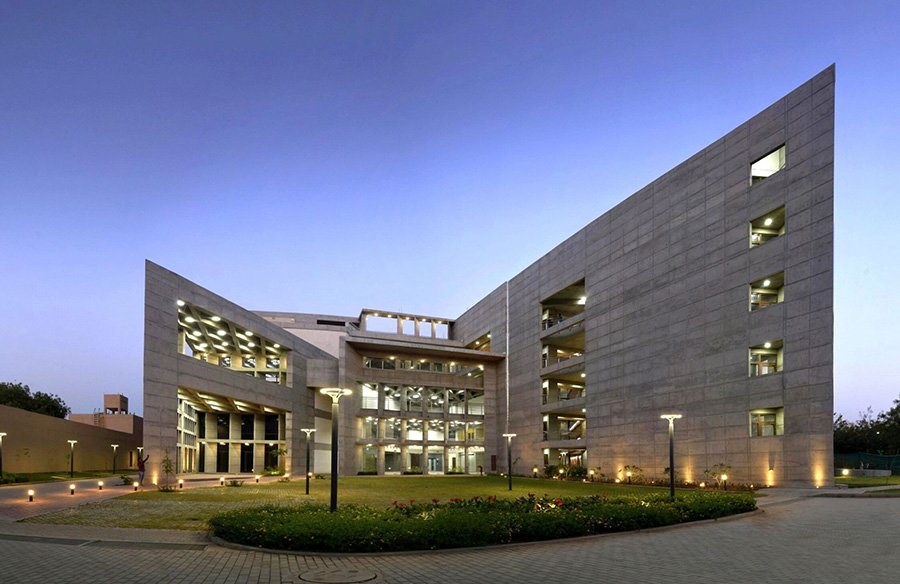
One of the most environmentally friendly campuses in India is that of IIT Gandhinagar. GRIHA 4-star accredited, the university combines biophilic design, renewable energy sources, and smart water management. It guarantees a low environmental impact by including passive ventilation systems, solar power generating, and wastewater recycling, so improving occupant comfort.
3. Suzlon One Earth, Pune
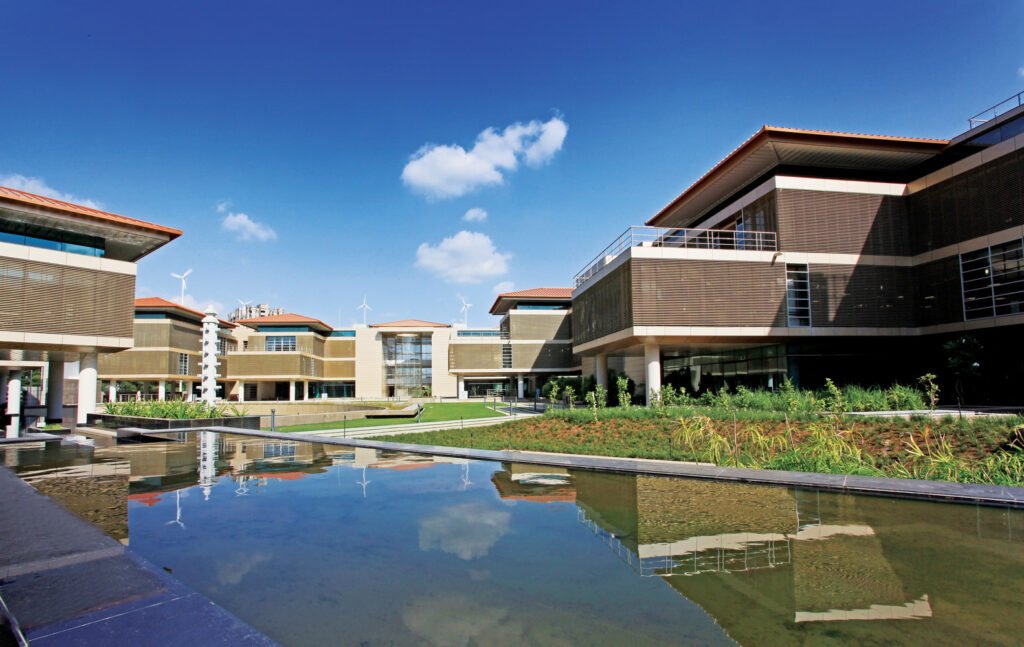
Run totally on renewable energy, Suzlon One Earth is a zero-energy corporate facility recognized as GRIHA Platinum. Among India’s most successful green offices, the project combines solar and wind energy, clever daylighting techniques, and rainwater collecting.
4. CEPT University, Ahmedabad
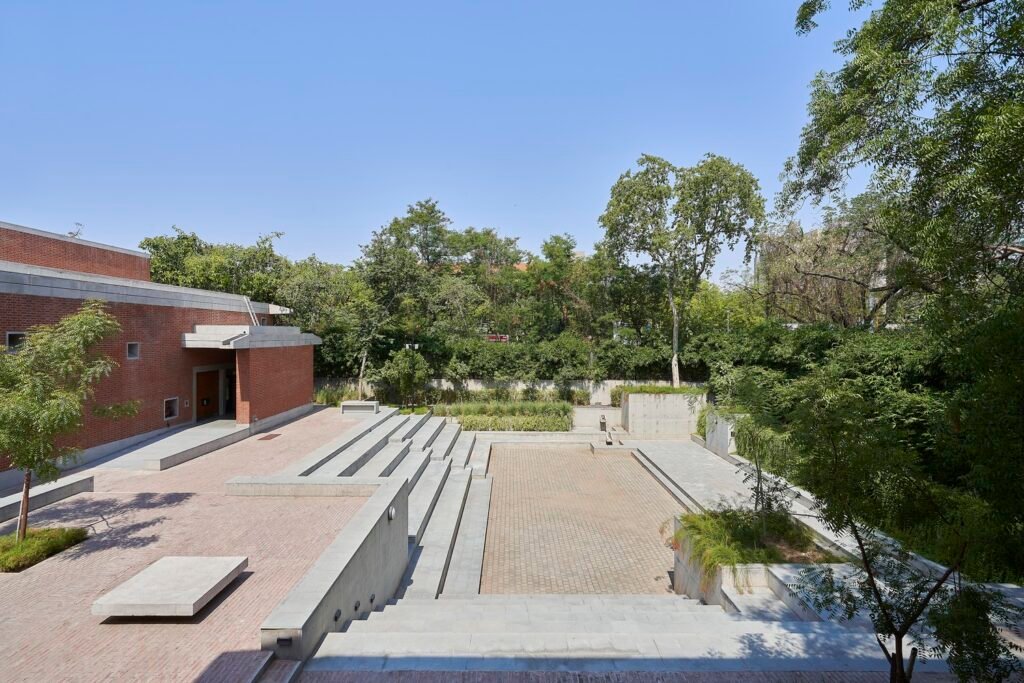
In order to get GRIHA accreditation, CEPT University applied sustainable design techniques The campus makes best use of passive cooling, large-scale tree planting, and energy-efficient lighting. Designed to maximize natural light and ventilation, the buildings guarantee energy savings of more than forty percent when compared to traditional construction.
5. The ITC Green Centre, Gurgaon
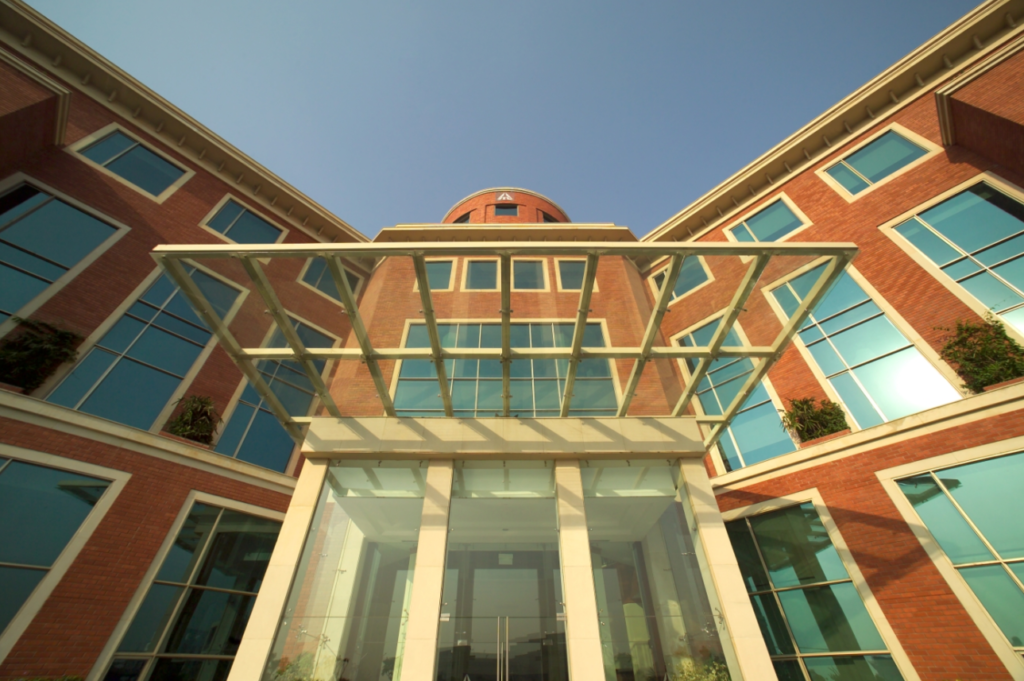
Among the first GRIHA-rated commercial buildings in India is this one. It emphasizes trash less, energy savings, and water efficiency. High-performance glass facades, solar panels, and effective insulation on the building help to lower running costs while nevertheless preserving a comfortable and productive internal space.
International Case Studies
6. The Edge, Amsterdam, Netherlands
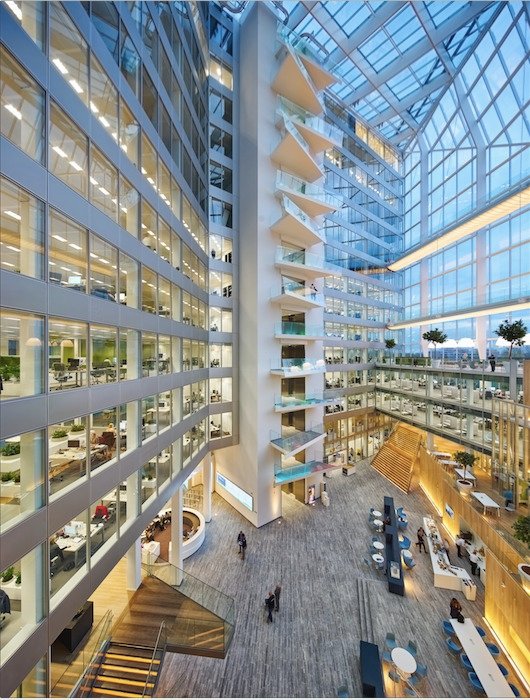
Energy-positive and among the smartest and most ecological buildings in the world, The Edge creates more electricity than it uses. Future-proof green buildings are modeled by this office space using IoT-based energy management, solar panels, and a rainwater collecting system.
7. Bosco Verticale, Milan, Italy
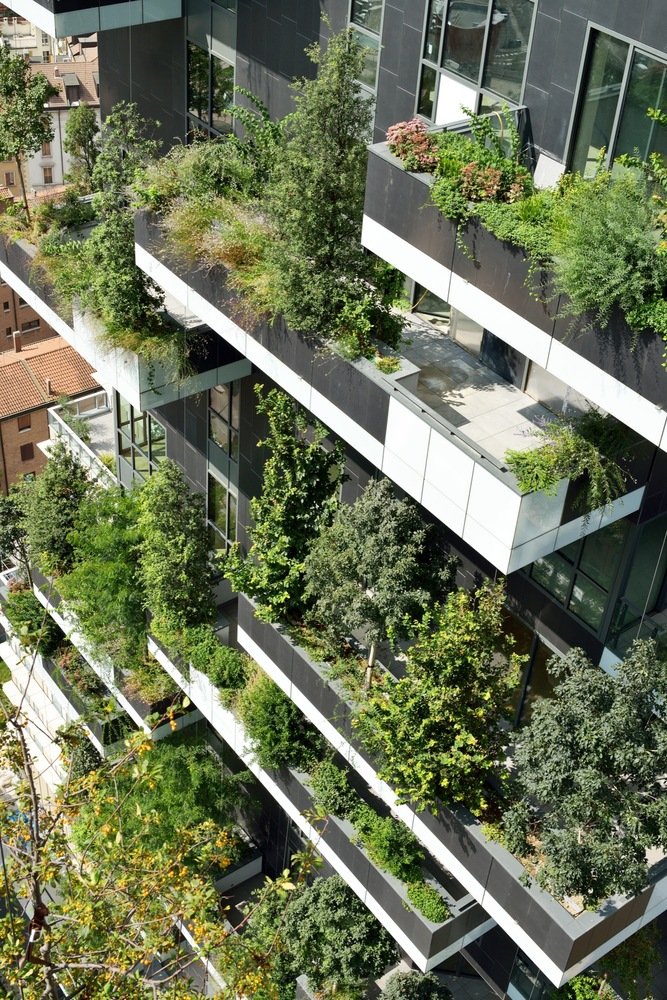
Integrating more than 9,000 trees and plants into its high-rise construction, Bosco Verticale—also known as the Vertical Forest—markedly lowers urban heat and enhances air quality. The building’s distinctive approach fits GRIHA’s ideas of urban sustainability, green space integration, and biodiversity.
8. One Central Park, Sydney, Australia
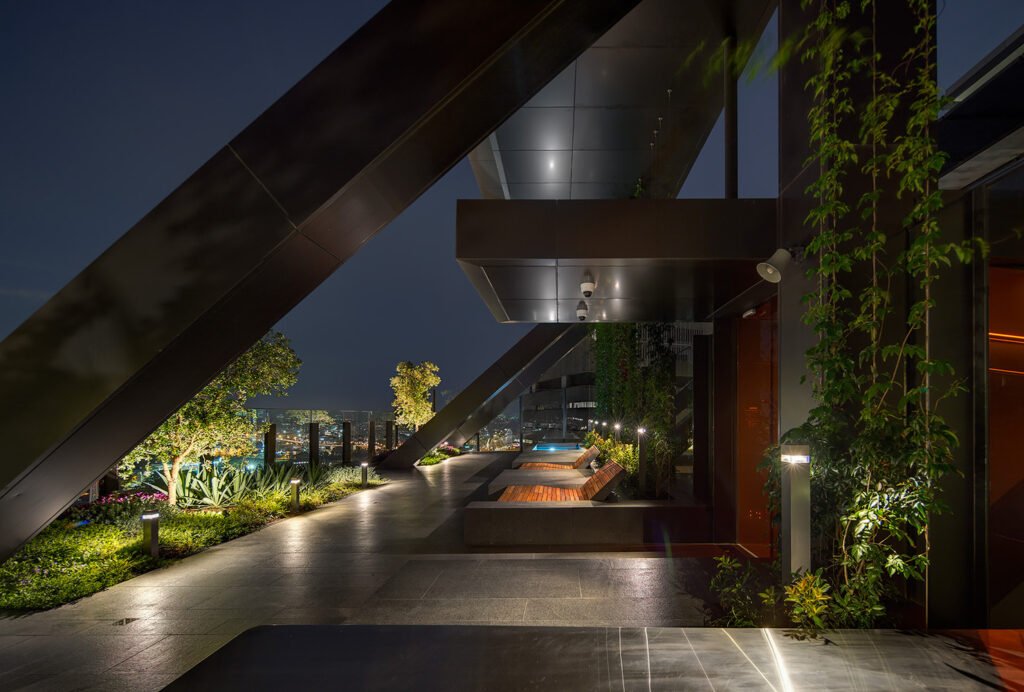
The vertical garden, solar power generating systems, and water recycling systems of this environmentally friendly apartment complex The green walls of the building reduce energy consumption by absorbing CO2 and acting as thermal insulating agent, therefore improving occupant comfort.
9. The Bullitt Center, Seattle, USA
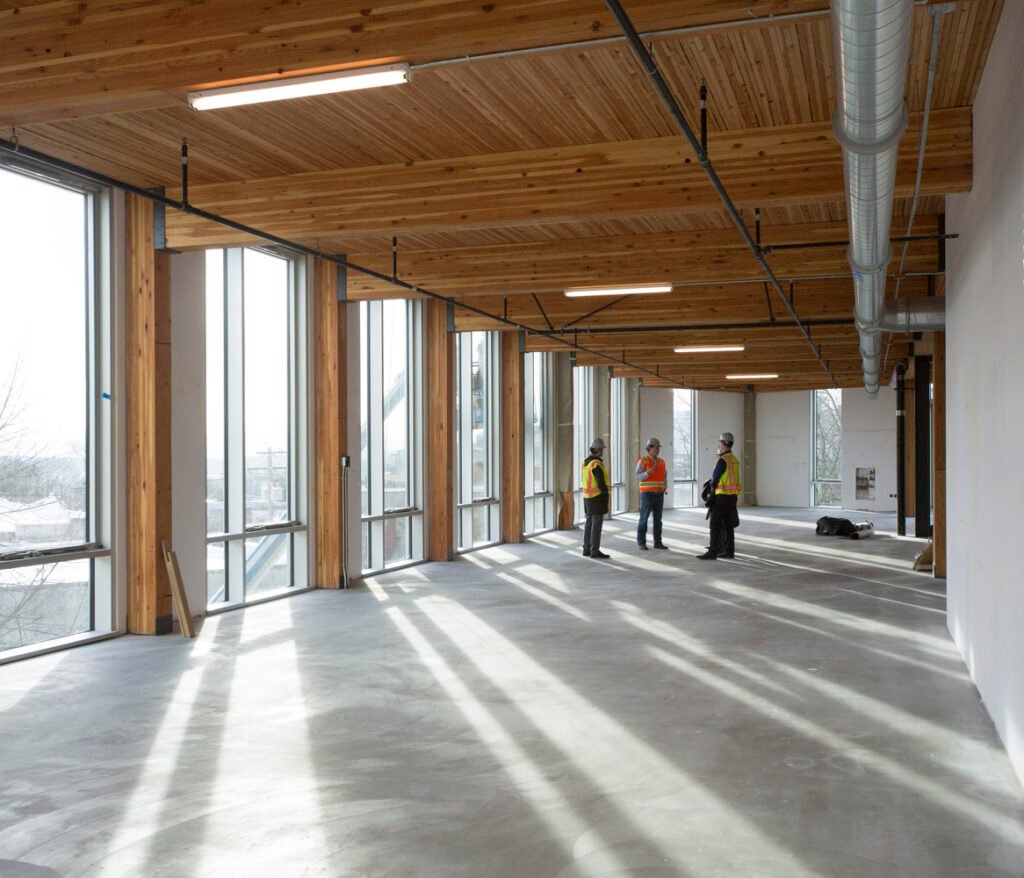
Built as the greenest business construction worldwide, the Bullitt Center runs entirely on water and electricity. It uses high-efficiency building materials, rainwater collecting, and net-zero energy consumption—GRIHA certification-like sustainability practices.
10. Oasia Hotel, Singapore
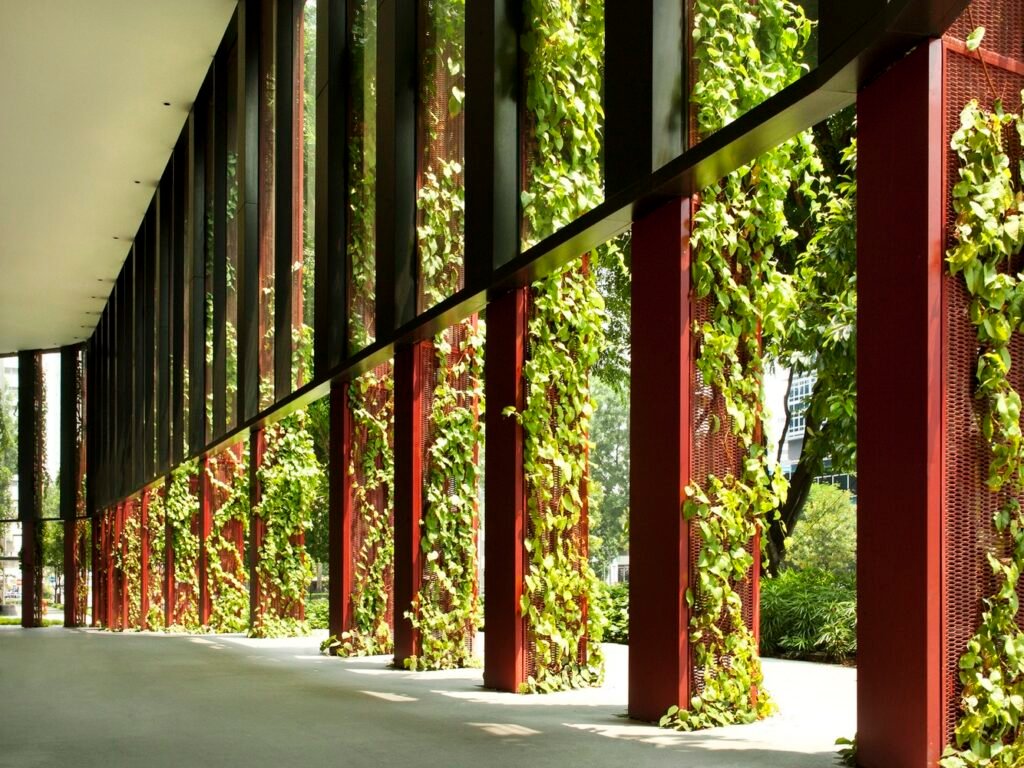
Comprising luxuriant flora that controls temperature and cleans the air, Oasia Hotel is a living green skyscraper with bio-climatic architecture. Complementing GRIHA’s environmentally responsible design philosophy, this project stresses energy efficiency, water recycling, and biodiversity preservation.
Conclusion
Encouragement of ecologically responsible, resource-conscious, and energy-efficient building by GRIHA Certification has changed urban sustainability. The case studies show how green buildings improve occupant health, best use available resources, and lower carbon footprints. GRIHA’s influence will keep determining the direction of green design worldwide as the need for sustainable buildings rises.
Adopting GRIHA-certified buildings would be crucial for a greener, healthier, and more rich future as India keeps becoming urban. Now is the moment to make environmentally friendly living the standard rather than the exception and invest in sustainable development.
Let’s create a better future one green building at a time!
See the official GRIHA website or speak with a qualified green building professional for further information.


